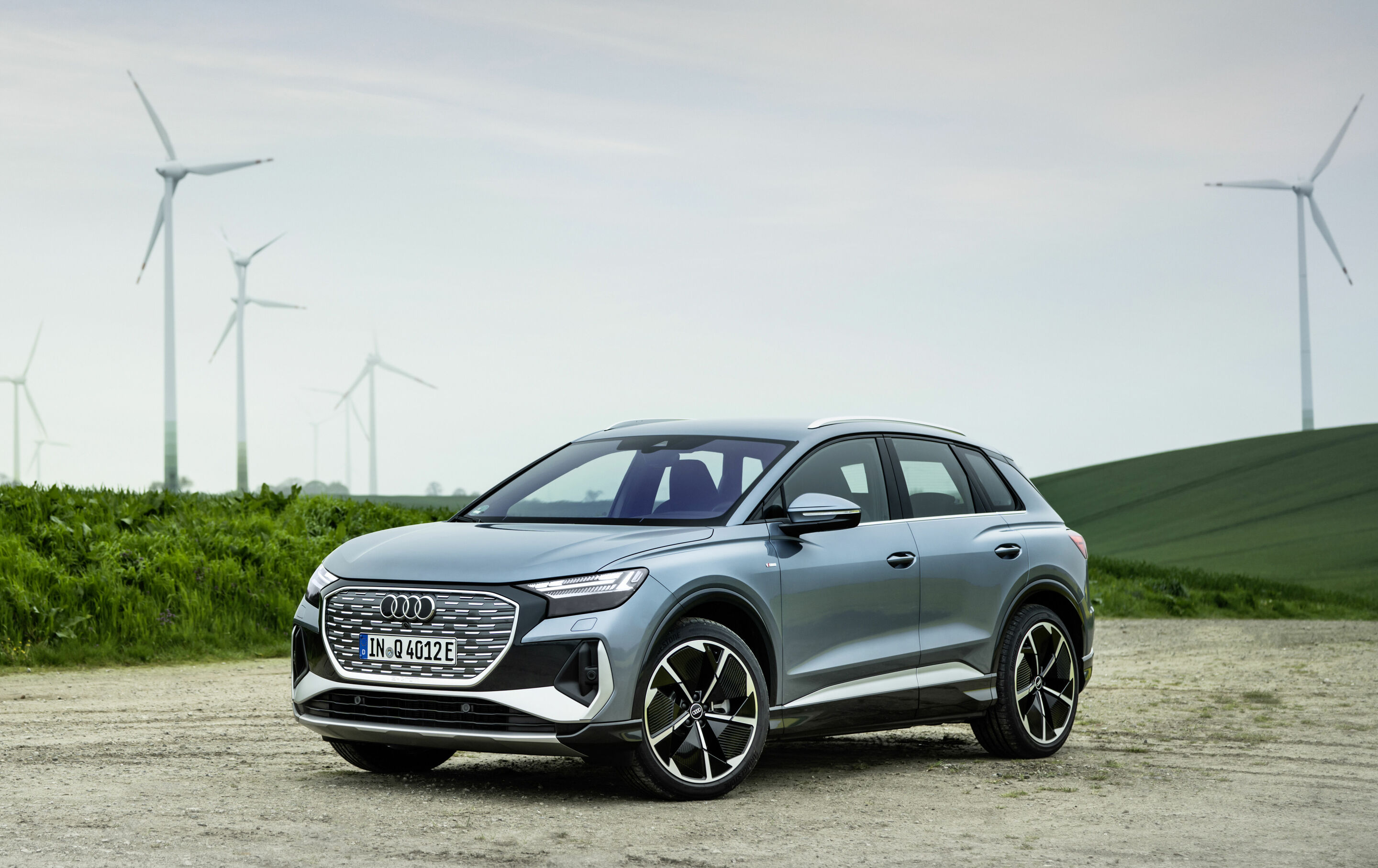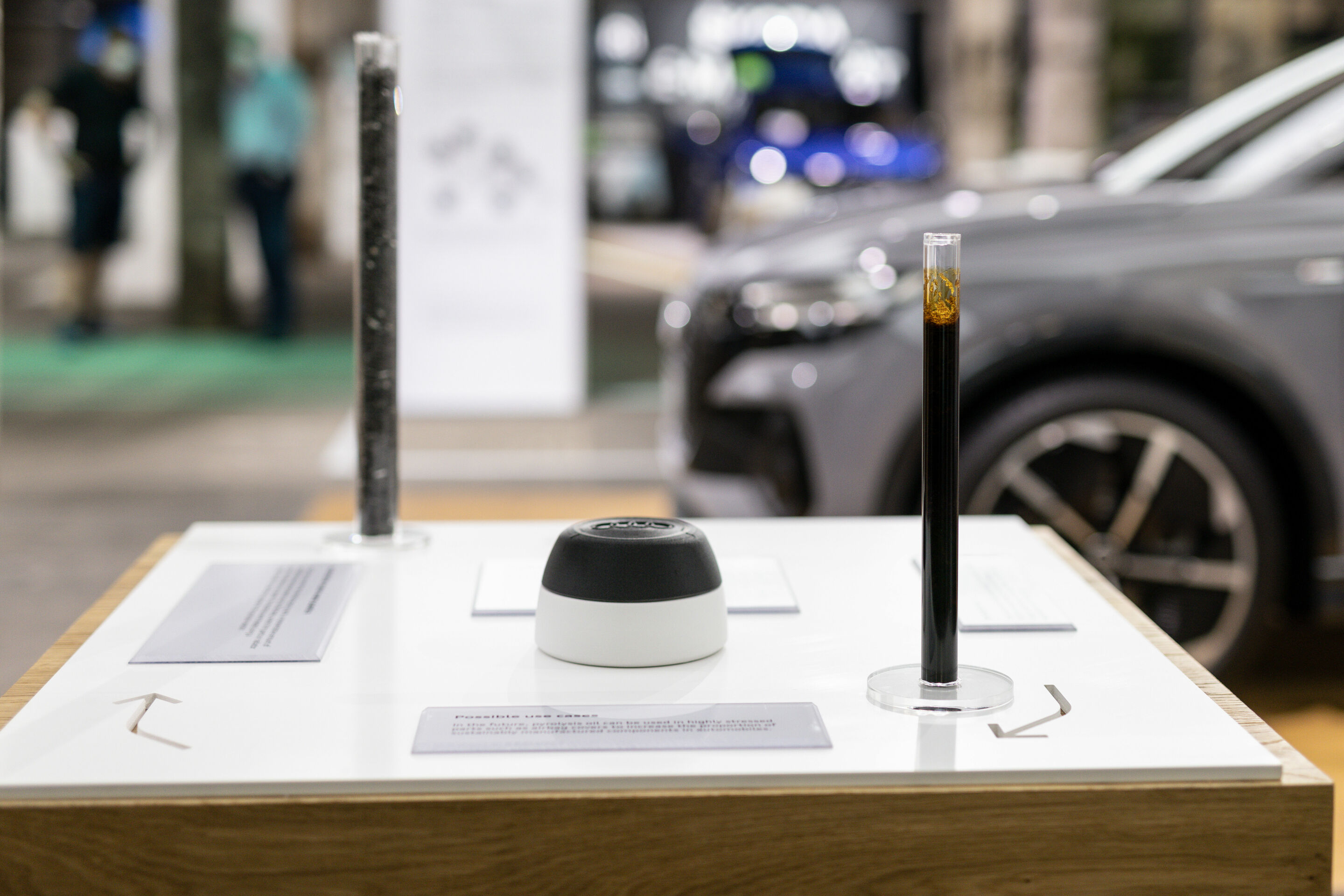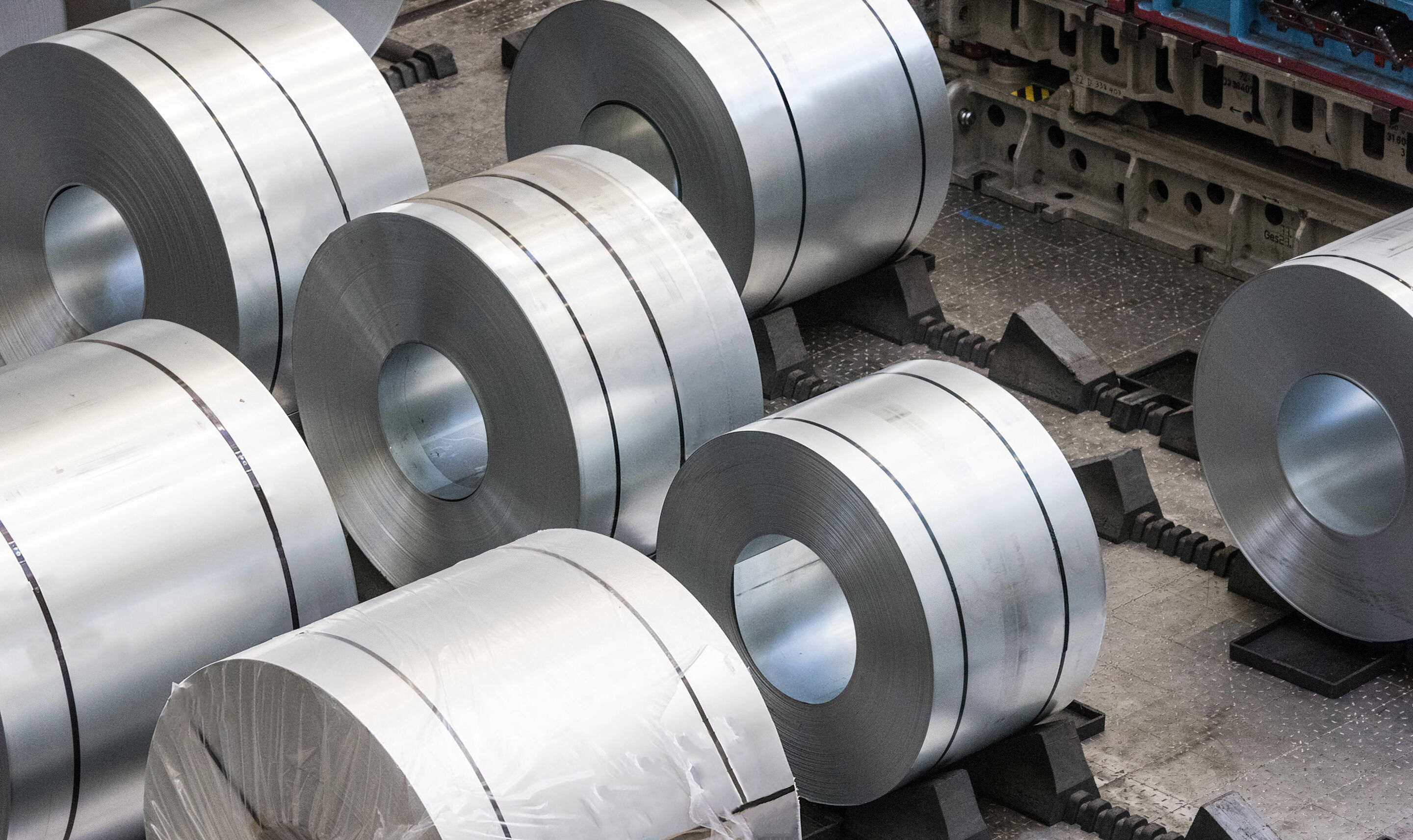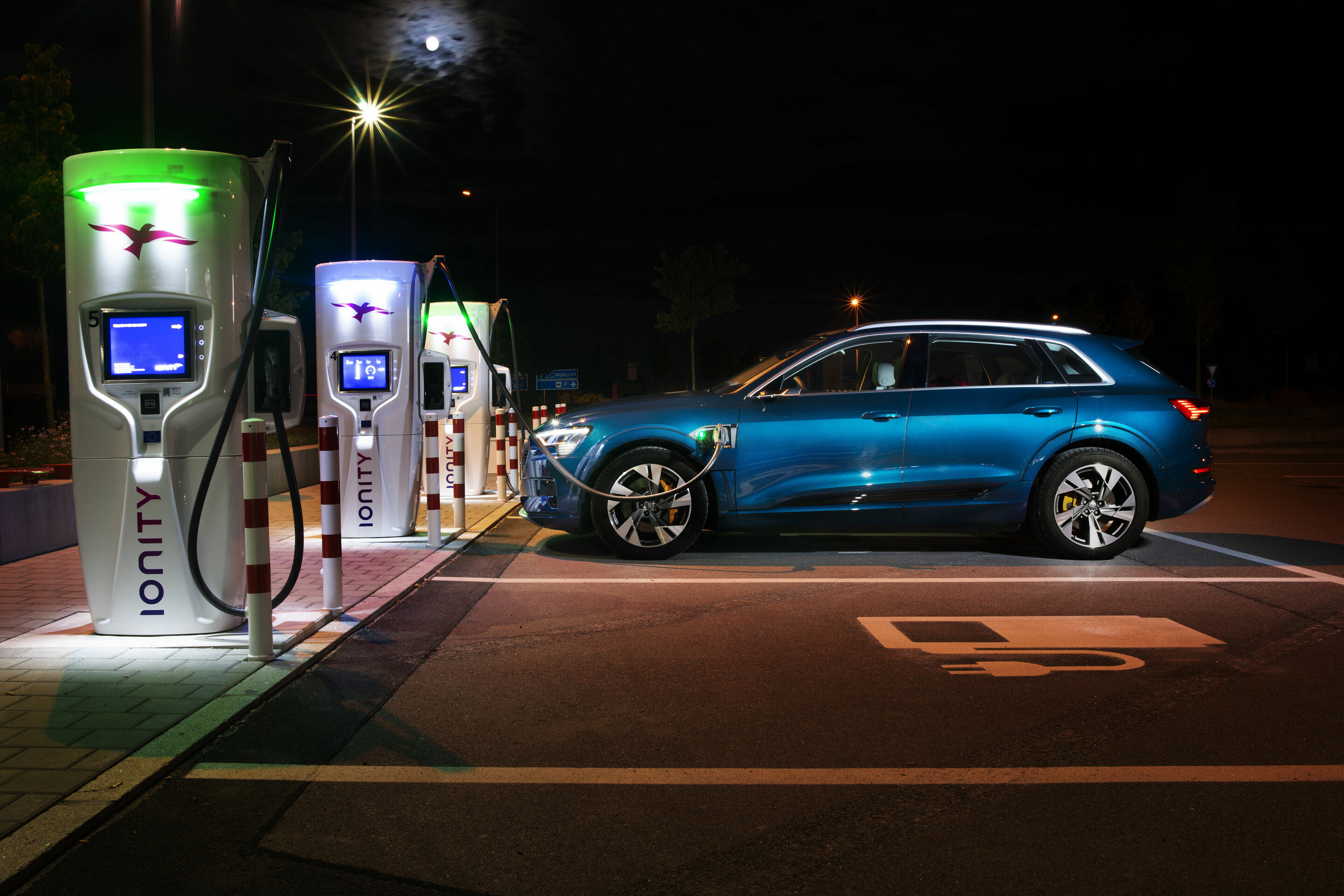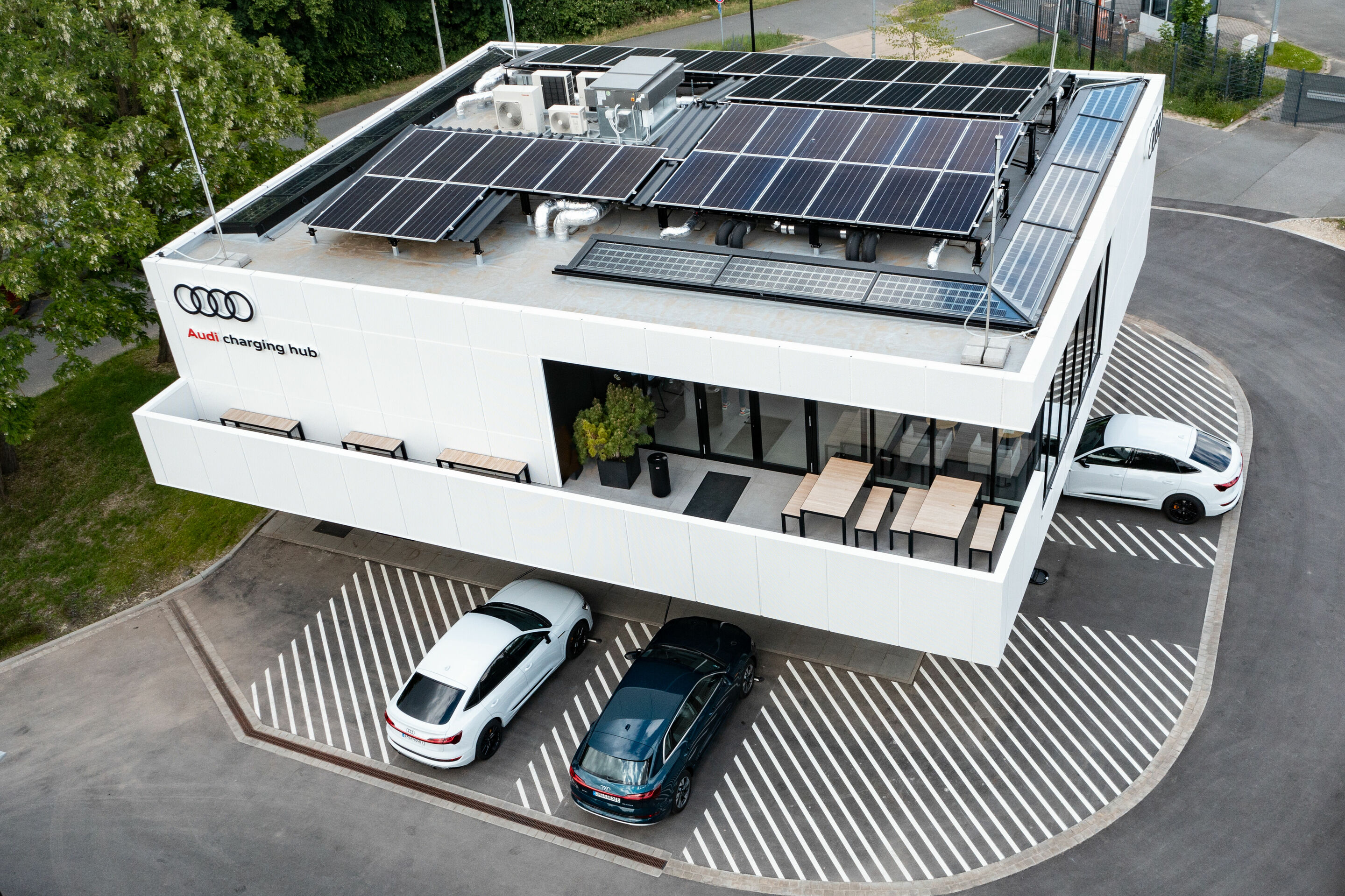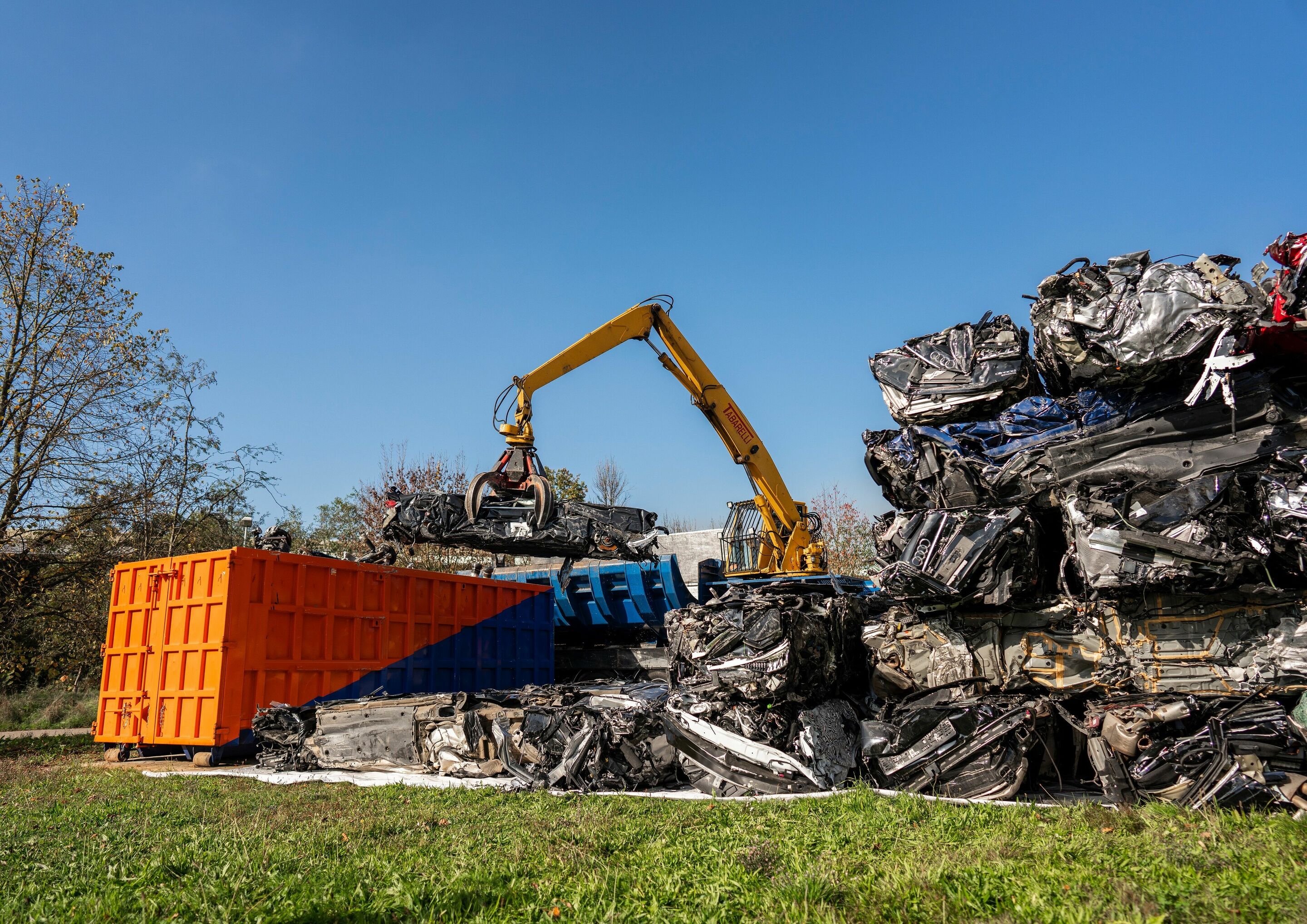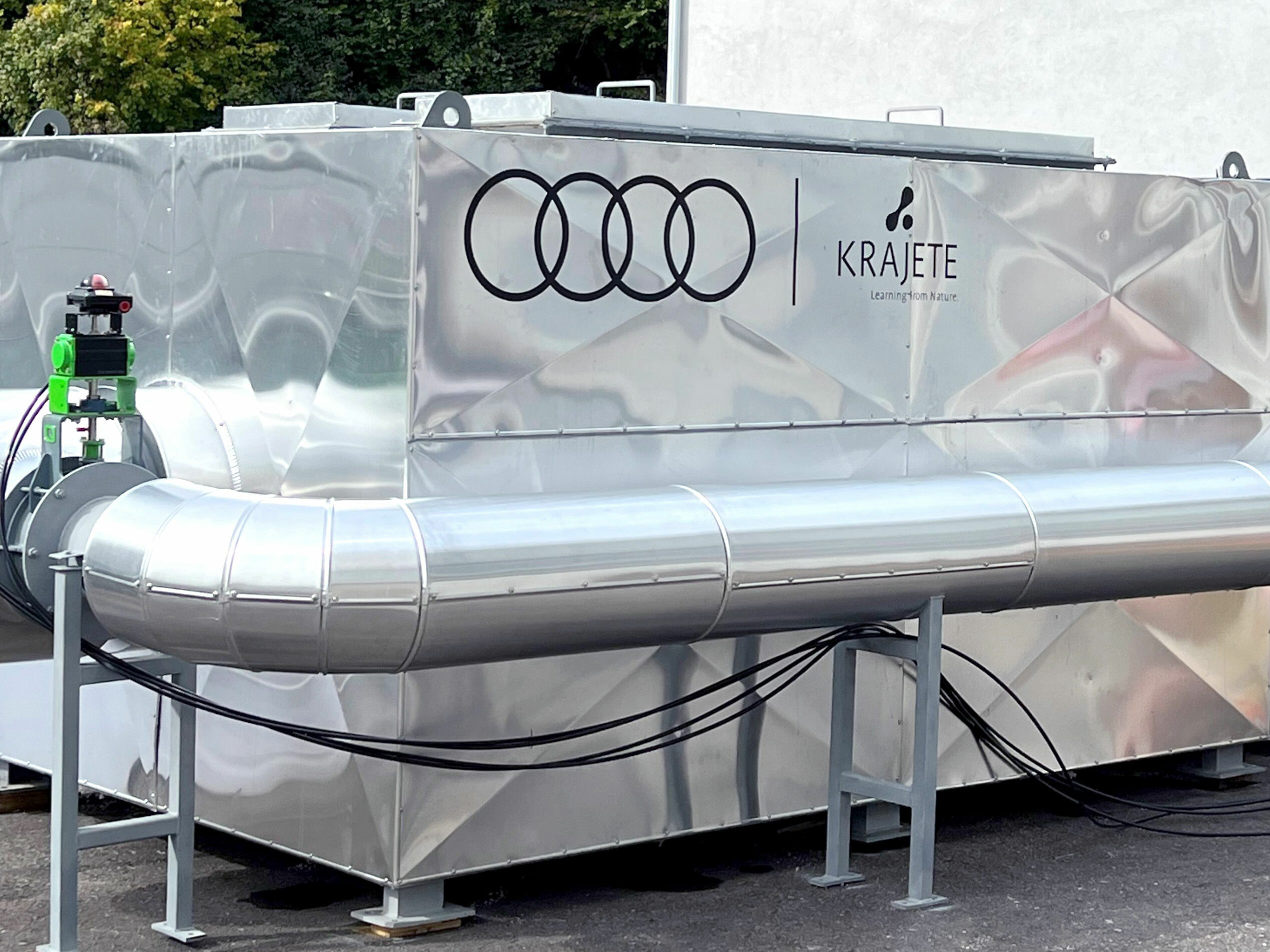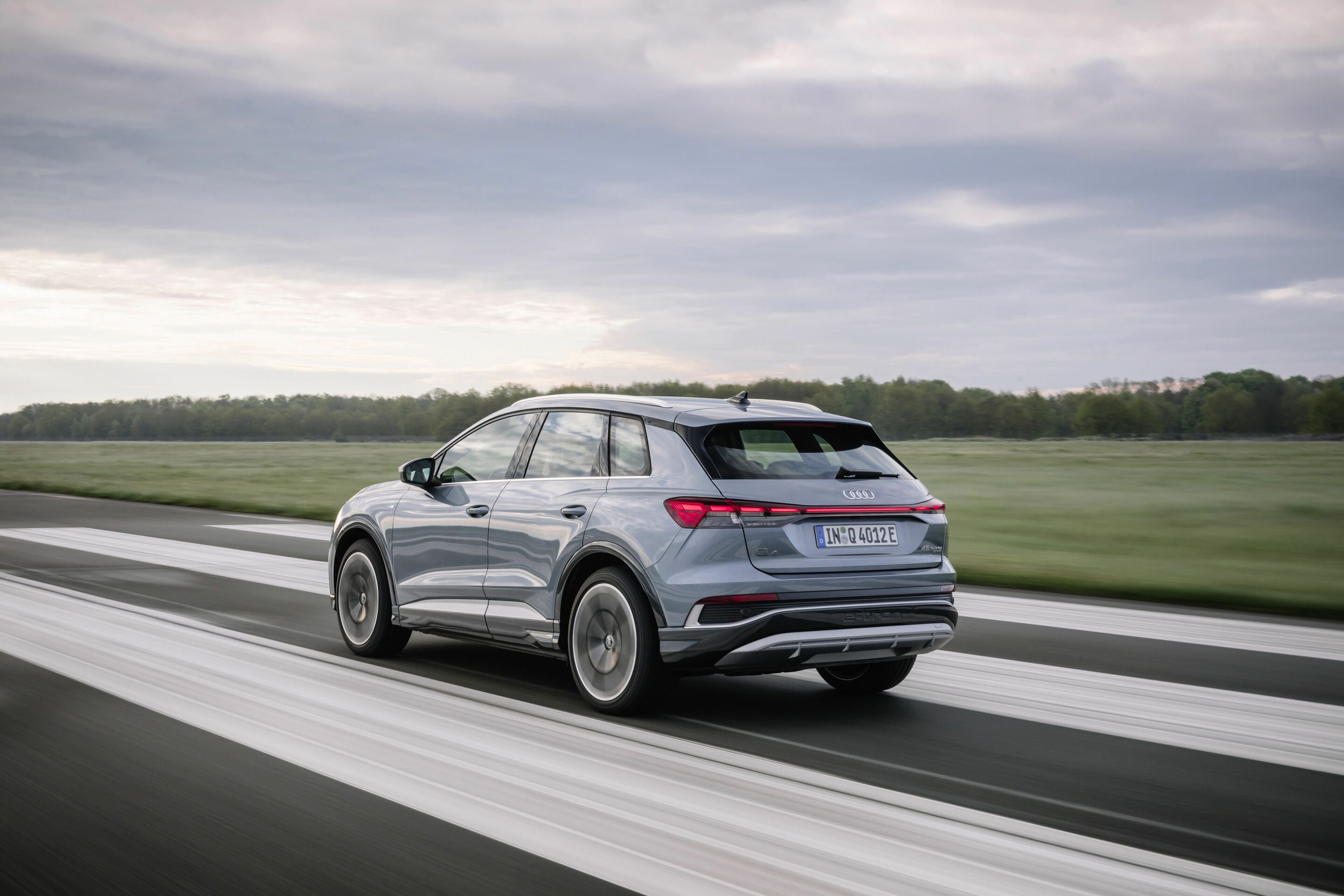Lifecycle analysis
How sustainable are electric cars really?
Audi subjects each and every model to a comprehensive lifecycle assessment or LCA – whether combustion engines, plug-in hybrids, or all-electric vehicles – which makes the environmental impact of Audi’s models transparent over their entire lifecycle.
As part of this LCA, Audi divides the lifecycle of its vehicles into three stages: vehicle production, utilization, and recycling. Vehicle production includes the extraction of raw materials, the production of the components, and the final assembly of the cars in Audi’s plants. Secondly, the utilization stage considers the effects of electricity and fuel supply and the direct emissions generated during driving. And then there is the third stage, recycling at the end of the vehicle’s life.
The transformation to electromobility impacts all stages of a vehicle’s lifecycle, including making individual components in upstream production processes. As with any industrially manufactured product, vehicle production entails emissions that can occur at different points in a car’s lifecycle. In the production of electric cars, a much larger proportion of carbon emissions are attributable to upstream production processes in the supply chain compared with the production of vehicles with combustion engines. This is primarily due to battery production, which is energy intensive. That’s why Audi relies on measures to avoid and reduce emissions both during production and in later phases of the lifecycle to improve its products’ ecological balance.
In production, Audi sees the sustainable use of resources as crucial in order to manufacture electric vehicles as efficiently and environmentally friendly as possible. The company achieved a key goal of its environmental program Mission:Zero at the beginning of 2025. Since then, all Audi production sites worldwide have been manufacturing in a net carbon-neutral manner1. For the long term, Audi is pursuing the vision of achieving net carbon-neutral operations company-wide by 2050. Beyond that, the goal is to further optimize the use of resources.
The utilization stage begins the moment a car is delivered to the customer. It is during this stage that another significant proportion of the carbon emissions that occur during the life of a car are generated. Electric vehicles do not emit carbon on the road. Moreover, charging consistently with green electricity goes a long way to further improving the carbon footprint. Compared with the average electricity mix in the EU, carbon emissions can be reduced by about half over the car’s lifecycle when only green electricity is used for charging.
Every nut and bolt counts
When an Audi model undergoes a lifecycle assessment, the same basic parameters always apply - a vehicle configuration as representative as possible for the model in question, the calculation of fuel and electricity consumption according to WLTP, and a mileage of 200,000 kilometers.
The assessment focuses on the vehicle’s potential greenhouse gas emissions, expressed in “carbon equivalents”. Put simply, this is a unit of measurement used to measure the effects of greenhouse gases. All emissions are taken into account, not just carbon dioxide. The German Environment Agency (Umweltbundesamt) defines carbon equivalents as “the extent to which a precisely defined mass of a greenhouse gas contributes to the greenhouse effect over a specified period of time compared with carbon dioxide (CO2)”.
Each car’s average of 5,000 parts can be analyzed for energy consumption and emissions with the help of special software – right down to the smallest screw. All the steps along each part’s value chain are taken into account – for example, from mining the aluminum ore bauxite to processing in the press plant. This assessment can be taken as the basis for identifying and evaluating measures to reduce carbon emissions and optimize potential throughout the entire manufacturing process.
All the information from the lifecycle assessment is included in a background report, which is checked and validated by independent experts. The results are also reflected in the Volkswagen Group’s decarbonization index (DCI)2 and within the Audi brand. The DCI serves as a strategic metric on the path toward reducing carbon emissions. Taking 2018 as the benchmark, Audi’s DCI is set to drop by 40 percent by 2030.
More sustainability in the supply chain
The Audi Q4 e-tron shows in concrete terms what sustainability looks like throughout the life of an Audi vehicle. Producing powerful batteries takes a great deal of energy. This is why, in the production of electric vehicles, nearly half of carbon emissions can be chalked up to the supply chain. To offset this, Audi launched its “CO2 program in the supply chain” back in 2018. Together with suppliers, the program identified measures for reducing carbon emissions. For example, certified green electricity is used for the production of the Audi Q4 e-tron’s cells – and suppliers commit to this by contract.
Another example of how Audi is bringing more sustainability to the supply chain is secondary materials. Audi returns the aluminum scraps from the press plant to the supplier for processing and then gets them back in the form of newly processed aluminum coils.
This means less primary aluminum is necessary, and less carbon is emitted. The Aluminum Closed Loop has avoided more than 780,000 tons of net carbon emissions3 since its introduction This means less primary aluminum is necessary, and less carbon is emitted. The Aluminum Closed Loop has avoided more than 780,000 tons of net carbon emissionssince its introduction in 2017. In the meantime, the plants in Neckarsulm, Ingolstadt, and, since 2021, Győr in Hungary, as well as the Volkswagen site in Bratislava, are implementing the "Aluminum Closed Loop".
Green power in the utilization stage
The greatest potential for fully leveraging the advantages of electric drive systems lies in the utilization stage. In addition to the fact that electric cars don’t emit carbon on the road, the electricity used for charging is a decisive factor here. In their garage at home, customers can charge the Q4 e-tron with green power, for example, using Volkswagen Naturstrom, a sustainable electricity solution provided by “Elli”, a subsidiary of the Volkswagen Group. Customers on the road in Europe can charge using renewable electricity from networks such as IONITY’s. Moreover, Audi partners with energy providers to fund the expansion of renewable energy to increase the number of charging stations in Europe that use green power.
A second life for batteries
When the Audi Q4 e-tron reaches the end of its service life and its lifecycle ends, that doesn’t mean its battery cells are unusable. In fact, they often still retain a high percentage of their original capacity.
This means that, even after the vehicle has been dismantled, the battery cells can still be used for the purpose they were built for – storing electricity. Take the Audi charging hubs, for example. Premium quick-charging stations that supplement the charging infrastructure in urban areas employ used electric car batteries from development vehicles as second-life power storage systems.
Another example is the energy company EnBW, which uses used batteries provided by its partner Audi as power storage systems. These systems can serve, for example, as interim storage so that wind turbines and photovoltaic systems will no longer have to be taken from the grid when the generation of power spikes temporarily. Another possible use case is second-life battery storage systems that can provide the energy required for quick-charging infrastructure at events independently of local grid capacities. Eventually, a used battery will no longer have the capacity to serve even such second-life applications.
Then, they are finally dismantled into their individual components, following modern recycling concepts, and ultimately used again in new batteries. This is one of the purposes served by the Volkswagen Group’s pilot recycling facility for lithium-ion batteries in Salzgitter, Germany.
In launching the pilot site, the Volkswagen Group is taking yet another systematic step in its commitment to end-to-end sustainability along the entire value chain of high-voltage batteries. The aim is to close an industrialized recovery cycle for valuable raw materials such as lithium, nickel, manganese, and cobalt, in addition to aluminum, copper, and plastic, with a target recycling rate of upwards of 90 percent.
1 Audi understands net-zero carbon emissions to mean a situation in which, after other possible reduction measures have been exhausted, the company offsets the carbon emitted by Audi’s products or activities and/or the carbon emissions that currently cannot be avoided in the supply chain, manufacturing, and recycling of Audi vehicles through voluntary offsetting projects carried out worldwide. In this context, carbon emissions generated during a vehicle’s utilization stage, i.e., from when it is delivered to the customer, are not considered.
2 The DCI captures the average emissions of carbon and carbon equivalents along the complete lifecycle of Audi’s entire passenger car range; it is expressed in tons of CO2 per vehicle. The metric includes direct and indirect carbon emissions from individual production sites (Scopes 1 and 2) and all other direct and indirect carbon emissions generated in the vehicles’ lifecycle (Scope 3).
3 The calculation of the CO2 emissions savings from the Aluminum Closed Loop was updated compared to the previous year due to the reassessment of press shop offcuts. Audi understands net-zero carbon emissions to mean a situation in which, after other possible reduction measures have been exhausted, the company offsets the carbon emitted by Audi’s products or activities and/or the carbon emissions that currently cannot be avoided in the supply chain, manufacturing, and recycling of Audi vehicles through voluntary offsetting projects carried out worldwide. In this context, carbon emissions generated during a vehicle’s utilization stage, i.e., from when it is delivered to the customer, are not considered.
As of: March 2025
